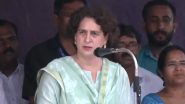New Delhi [India], Nov 30 (ANI): People residing in the national capital were seen wearing anti-pollution dust masks and scarves to protect their mouths and nose from the cocktail of dust and smog which has enveloped the region from the past couple of months.
According to the state-run System of Air Quality and Weather Forecasting And Research (SAFAR), no imminent improvement was recorded in the quality of air on Friday. At 8: 30 am the air quality index docked at 353.
The organisation also stated that the air quality is 'very poor' and likely to remain 'very poor' with small fluctuations. "There is no system building up as surface winds are south-westerly. However, air quality is likely to deteriorate significantly on December 2 as a cloudy condition and decline in temperature is likely to bring down inversion layer to trap pollutants. The contribution from stubble biomass is nil," it added.
Speaking to ANI, Anand Sharma, a resident of Noida, said: "There is a dire need to do something substantial in order to combat the increasing crisis of air pollution. All my family member especially aged are wearing masks and are avoiding outdoor activities because of the toxic air."
Sarita Thakur, a domestic help in Delhi, stated: "My all three children are suffering from respiratory disease Not only that, but near their school also garbage is burnt on daily bases which is causing them breathing trouble. I request the government to take necessary action in the matter and save the lives of poor."
In an attempt to measure the impact of toxic air quality on people, the University of Chicago has launched a new tool named Air Quality Life Index (AQLI) which quantifies air quality data as the numbers of years lost to air pollution. The compiled by the weather experts revealed that exposure to the unclean air of India's capital will cost its residents 10.2 years of their lives.
According to this data, Indians will lose an average of 4.3 years of their life due to air pollution. Residents of Lucknow will lose 9.4 years, 7.7 years for Patna, 9.3 for Mathura, 8.7 for Gurgaon, 5.9 for Ludhiana and 6.1 years for Gwalior. The data is more hopeful for southern cities. Mumbai is at 2.9, Bengaluru at 1.7, and Chennai residents stand at losing 1.9 years.
If one looks closely, besides air pollution menace, the warnings of climate change can't be ignored anymore. This year, December- which is suppose to the coldest month of the year- is just around the corner but the winter season is still at bay.
The last time when Northern India witnessed a spell of rain was in between November 13 and November 14. Since then, warm and dry weather conditions are prevailing across Delhi's neighbouring states such as Uttar Pradesh, Punjab, Haryana, Rajasthan, and west Uttar Pradesh.
At present, the minimum and maximum temperature in most of the northern parts of India is hovering at 2 degree celsius and 3 degree celsius which is above the normal range. Due to such wavering temperature, chilly winters are yet to make an appearance over Delhi and its neighbouring state.
According to the India Meteorological Department (IMD), successive Western Disturbance is approaching towards Western Himalayas but they have failed to induce a cyclonic circulation over North Rajasthan and adjoining areas such as Delhi and Uttar Pradesh. Moreover, in the absence of these weather systems, rain showers and thundershowers and strong winds have remained absent from the northern part of India.
It is expected that on December 5 and 6, there will be a significant fall in the temperature accompanied by unabated cold northwesterly winds. During these days, people residing in Delhi are likely to witness chilly mornings and light woollens will be required to combat the cold.(ANI)
(This is an unedited and auto-generated story from Syndicated News feed, LatestLY Staff may not have modified or edited the content body)













 Quickly
Quickly




















